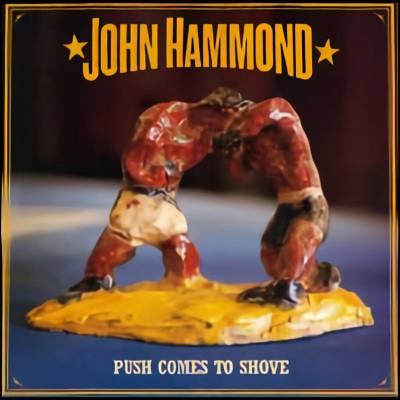
Push Comes to Shove
by Thom JurekJohn Hammond has been releasing records for over 40 years. He's stayed stubbornly true to his vision of the blues for the entire run. Some of those recordings have, understandably, been better than others, but as a live performer -- whether playing in a roadhouse or on a festival stage -- he's burned the house down. Unfortunately for him, that fiery wandering spirit has not always been captured on tape. That said, Hammond rings in 2007 with Push Comes to Shove, an album of originals and covers done his own way, recorded with his traveling band that includes bassist Marty Ballou, pianist/organist Bruce Katz, and drummer Stephen Hodges. There is a new twist in the offing, however. His producer this time out is someone who gets it. In Garrett Dutton (aka G. Love), Hammond has found the flame anew. Love and Hammond met years ago in a bar in Philly. Love was there to see the bluesman perform, but didn't know him by sight. He was old enough to drive to the gig and get in the door, but not old enough to drink legally. He approached Hammond and his wife, Marla, without knowing who they were, to buy drinks for him and his girlfriend. More recently, Hammond and Love happened upon one another in a train station in Yokohama. Marla made the suggestion and this collaboration was born. Love gets Hammond in a way that most producers can't. He feels and hears him as an itinerant bluesman who has to shout for his supper from the stage. That's the way Push Comes to Shove sounds: raw, mean, dirty, bellowing, and soulful. Love places Hammond's distorted, filthy guitar -- electric or acoustic -- just above the throng created by the band, mixing his voice just above them, roaring and growling like a lion. ... Read More...
